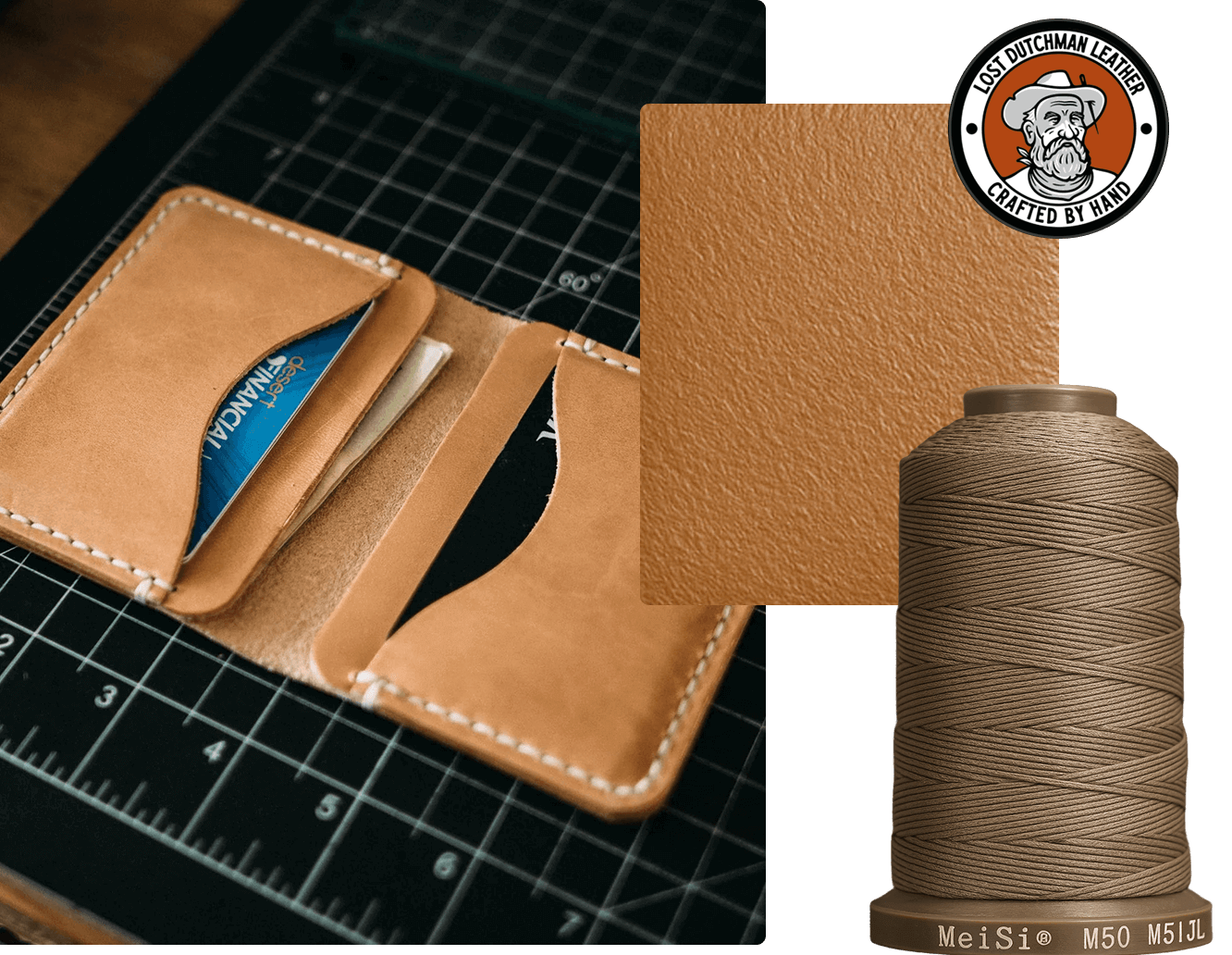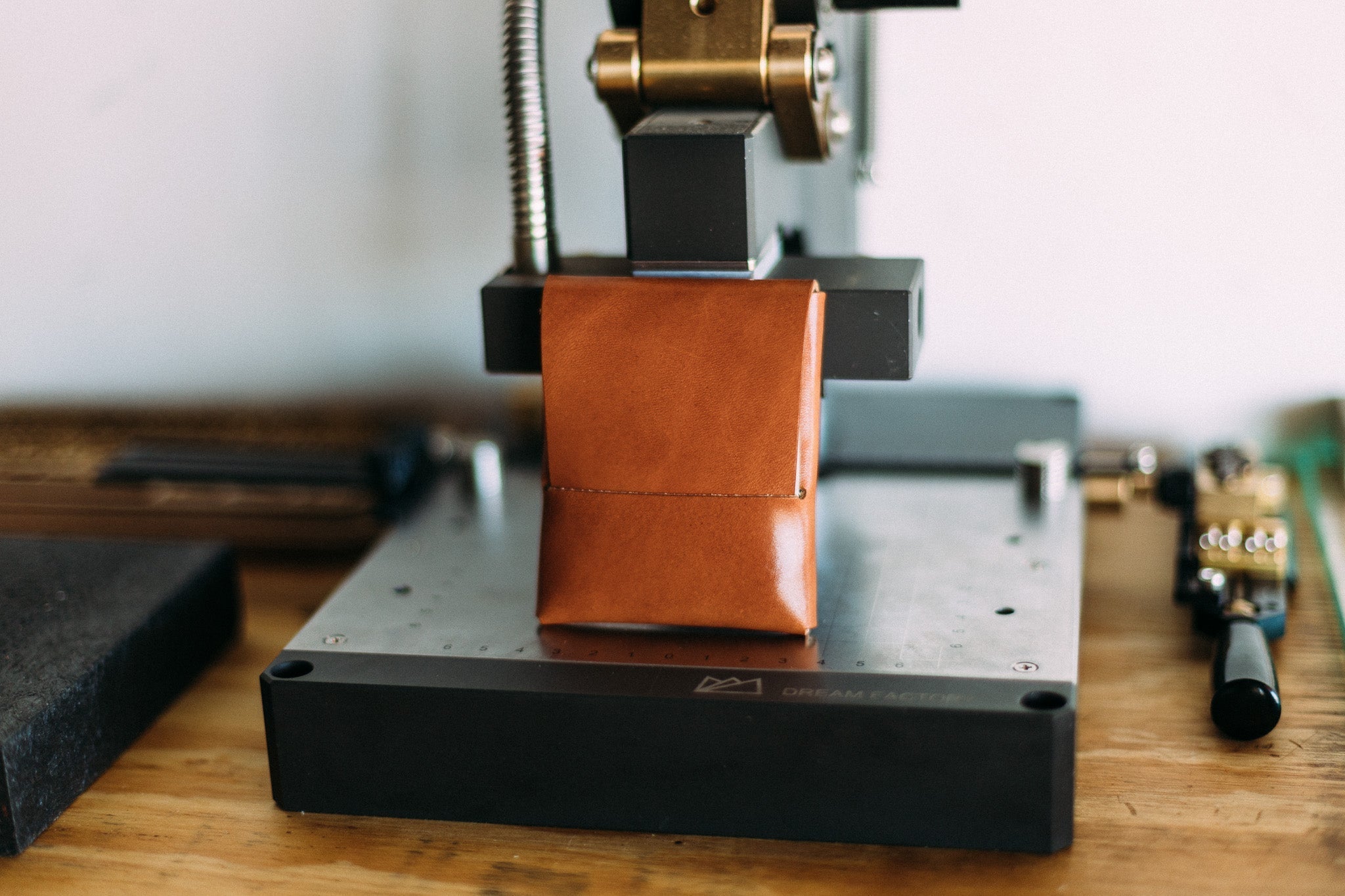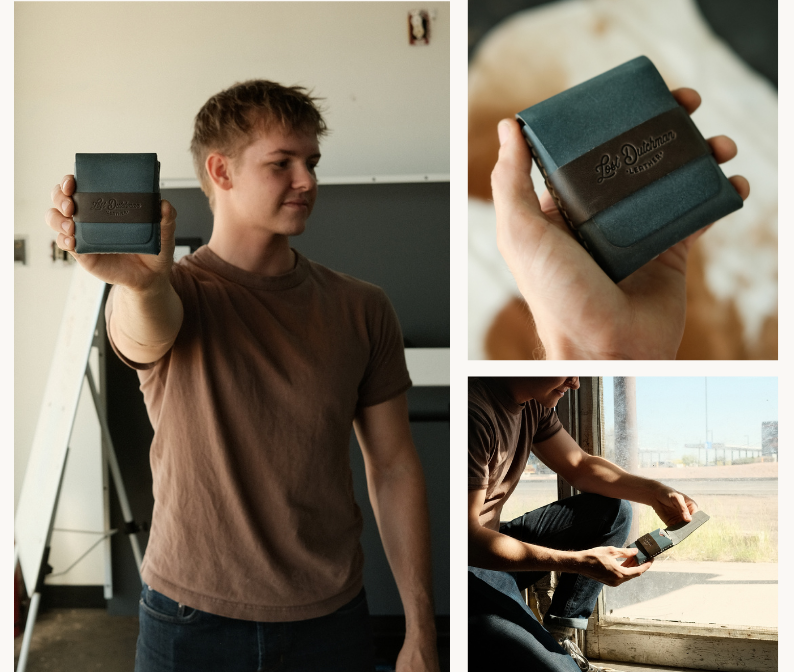
How Lost Dutchman Leather Chooses Its Materials
The character of a leather good begins long before it reaches the workbench. Long before the first cut, before the first stitch, and even before the artisan lays eyes on it, the story begins with a choice: the material. At Lost Dutchman Leather, every decision about sourcing and selection is deliberate. The hides we use, the tanning methods we trust, and the partnerships we foster all shape the final product.
Holding a finely crafted wallet or a belt is about more than the way it looks. The strength you feel in your hand, the richness of its scent, and the confidence that it will endure for decades are all results of careful sourcing. The truth is simple: choosing high-quality leather is the foundation of everything we do.
Why the Right Leather Matters
The difference between a wallet that becomes an heirloom and one that falls apart in months lies in the leather itself. Many people know the disappointment of buying a cheap belt or card holder, only to see it crack or peel before it has truly been worn in. Poor-quality leather is often split, bonded, or coated, treated in ways that give it a glossy appearance at first but rob it of longevity.
By contrast, Lost Dutchman leather materials are selected for their integrity. We focus on hides that retain natural strength, grain, and character. This isn’t about surface perfection; it’s about depth, resilience, and authenticity. Each product begins with leather that already carries within it the potential to grow more beautiful with age.
One might compare it to cooking. A skilled chef knows that even the finest technique cannot disguise poor ingredients. In the same way, even the most talented leatherworker cannot turn weak leather into a product that lasts. True craftsmanship starts at the source.
A Philosophy of Purposeful Sourcing
Every material choice reflects more than function; it reflects our values. By sourcing leather exclusively from within the United States, we support tanneries with a long heritage of excellence and ensure oversight at every stage. This decision is not about convenience. It’s about trust, accountability, and respect for both tradition and sustainability.
Supporting American Tanneries
Working with American tanneries provides transparency and consistency. Instead of anonymous shipments from overseas, we know the origin of every hide. This direct connection allows us to uphold the high standards our customers expect. The hides we choose are not random; they are carefully reviewed and approved for quality, thickness, and finish.
Choosing local materials also supports communities and reduces environmental impact by cutting out unnecessary shipping across oceans. It’s a decision that blends ethics with practicality, ensuring excellence without compromise.
The Local Difference
To describe the difference, think of it as the contrast between buying bread from a supermarket shelf and buying it directly from a trusted baker who knows his craft. One offers convenience; the other offers care, accountability, and quality you can taste. That’s the assurance of working closely with local tanneries: each hide carries with it a relationship of trust.
Full-Grain Leather: The Cornerstone of Quality
Among the many grades of leather, full-grain stands at the top. It is the outermost layer of the hide, dense with fibres and full of natural markings. Unlike corrected or top-grain leathers that are sanded smooth, full-grain retain every subtle characteristic of the animal’s life. These marks are not flaws. They are history, proof of authenticity.
Full-grain leather is strong, resistant, and capable of developing a patina unique to its owner. Over years of use, a wallet darkens, a belt softens, and a card holder gains sheen in the places most often touched. Each change makes the piece more personal.
A helpful analogy is solid oak furniture compared to veneered particleboard. The solid oak grows richer over decades, while the veneer chips away. In the same way, full-grain leather matures with dignity, while lesser leathers quickly show their weakness.
This is why our wallets collection, from compact card holders to classic bifolds, is crafted exclusively from full-grain hides. Each one begins with strength and ends with character.
The Art of Vegetable Tanning
Material choice goes beyond the grade of hide; it extends into the tanning process. At Lost Dutchman Leather, vegetable tanning is our preferred method. This ancient technique, which uses tannins derived from plants such as oak bark and chestnut, takes weeks or months to complete. Unlike chrome tanning, which relies on chemicals for speed, vegetable tanning embraces time and tradition.
The results are remarkable. Vegetable-tanned leather has a warm, natural feel and develops a patina that is as personal as a fingerprint. With every touch, every ray of sunlight, and every day in a pocket, the leather shifts in colour and sheen.
Consider the way copper coins darken with age, carrying the story of every hand they pass through. Vegetable-tanned leather behaves similarly, only with more elegance. A bifold wallet may start pale, but with use, it deepens into rich, earthy tones, a transformation that tells your story.
A Partnership with Wickett & Craig
One of the most valued sources of Lost Dutchman leather materials is Wickett & Craig, a tannery established in 1867 and revered for its vegetable-tanned hides. Their reputation for excellence is unmatched, and their processes align perfectly with our commitment to authenticity.
Working with Wickett & Craig allows us to create goods that customers can trust. From The Belt to minimalist designs like The Mini Franklin, their leather provides a canvas that matures beautifully over time.
This relationship is built on shared principles: tradition, integrity, and the pursuit of quality that endures.
Beyond One Source: Diversity in Character
While Wickett & Craig remains a cornerstone, we also collaborate with other respected American tanneries. Each tannery brings its own strengths, offering variations in colour, texture, and finish. By diversifying our sources, we ensure versatility in our products.
This approach allows us to craft everything from rugged work-ready belts to refined card holders that slip easily into a suit pocket. Just as a painter needs a full palette, an artisan benefits from a wide range of leathers. The ability to match material to purpose is part of what gives each item its distinct character.
The Result: Goods That Tell a Story
Choosing the right leather is about more than longevity. It’s about creating goods that gather meaning with time. A wallet made from full-grain, vegetable-tanned hide will not only survive years of use; it will change, soften, and darken in a way that reflects your life.
Customers often share stories of how their wallets or trays have aged alongside them, a scratch from a holiday trip, a dark patch from years in a pocket, a softened edge from constant handling. These marks are not damaged. They are history.
This philosophy extends to everything we craft: from The Catch-All that organises your desk to the AirTag Keyring that safeguards your essentials. Each begins with carefully chosen leather and becomes a piece of your story.
Conclusion: Excellence Begins with Materials
The artistry of Lost Dutchman Leather lies not only in cutting and stitching but in the decisions made long before. The commitment to choosing high-quality leather, the partnerships with American tanneries, and the insistence on full-grain, vegetable-tanned hides are what give every product its soul.
When you carry one of our wallets, wear one of our belts, or place your essentials in a catch-all, you carry more than leather. You carry history, craftsmanship, and a philosophy rooted in authenticity. That is the legacy of Lost Dutchman leather materials, a legacy that begins not in the workshop, but at the source.
For those who value goods that endure, explore the full range of collections at Lost Dutchman Leather. And for enquiries about custom projects or materials, we welcome you to get in touch.


